
Key Points
- A Key Relative Breakout for Software
- High Beta Takes a Slight Advantage vs. Low Volatility
- Lumber/Gold Stages a Strong Move from Support
- Growth Over Value is an Ongoing Trend
- Will Small Caps Make the Turn vs. Large
Chart in Focus:
The S&P 500 Software Index is in a clear uptrend on an absolute basis, above the steadily rising 50-day moving average, and is on the verge of setting another record high. However, it is the relative ratio that has captured our attention today. On a relative basis, Software is in the process of breaking above the highs that were established in July of last year as it trades above a rising 50-day moving average. Software is arguably a key part of the “Growth” theme, and this breakout is a datapoint that confirms the view that “Growth” is leadership.
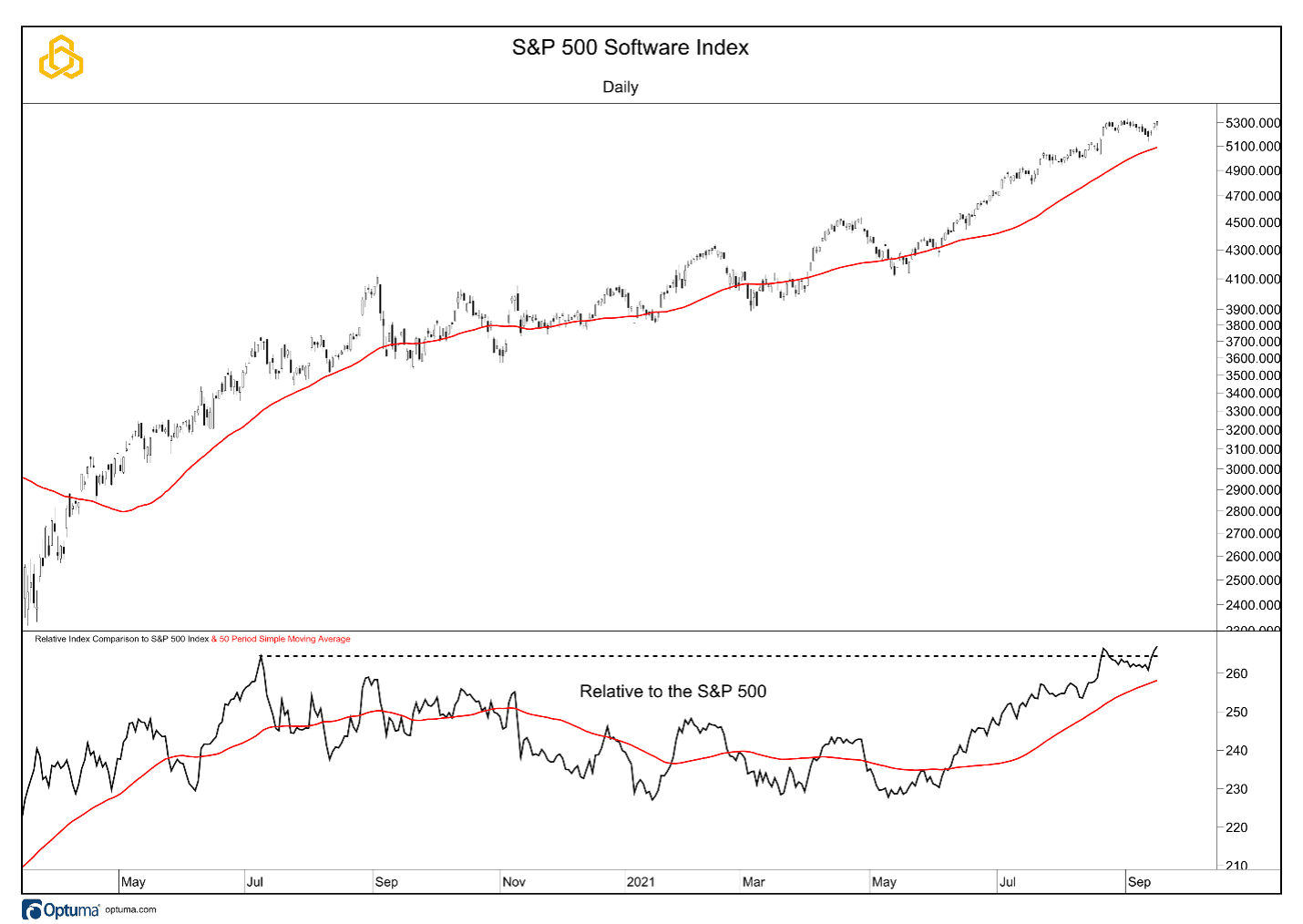
The following relationships can help give us a sense of the level of risk appetite on the part of investors.
High Beta vs Low Volatility
Last week we wrote that the ratio of the S&P 500 High Beta Index relative to the S&P 500 Low Volatility Index was nearing a decision point as it traded at the apex of the converging 50 and 200-day moving averages. We are a giving a slight advantage to an upside resolution and an attack on the highs from earlier this year. This is largely driven by a shift in momentum as the 14-day RSI has been making higher lows and has left a bullish divergence on the chart.
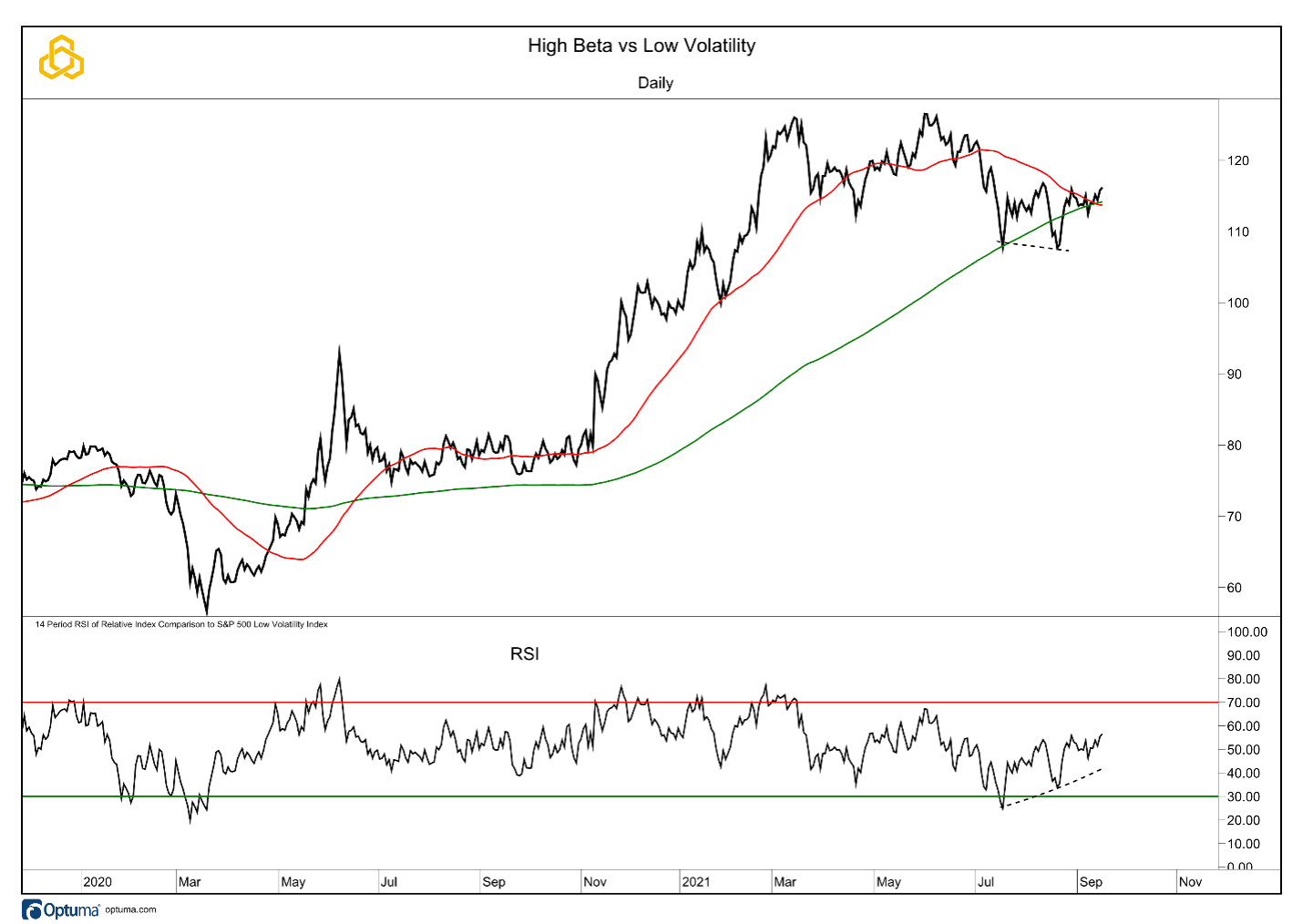
Consumer Discretionary vs Consumer Staples (Equal Weight)
The ratio of Consumer Discretionary stocks relative to Consumer Staples stocks remains above the rising 50 and 200-day moving averages and support at the 2018 highs, but within the consolidation that has been playing out since March. The 14-day RSI has made another lower high as it trades in the middle of the range, a divergence that would be confirmed with a break below the moving averages. A resolution to the upside would be a sign of increased risk appetite in the market.
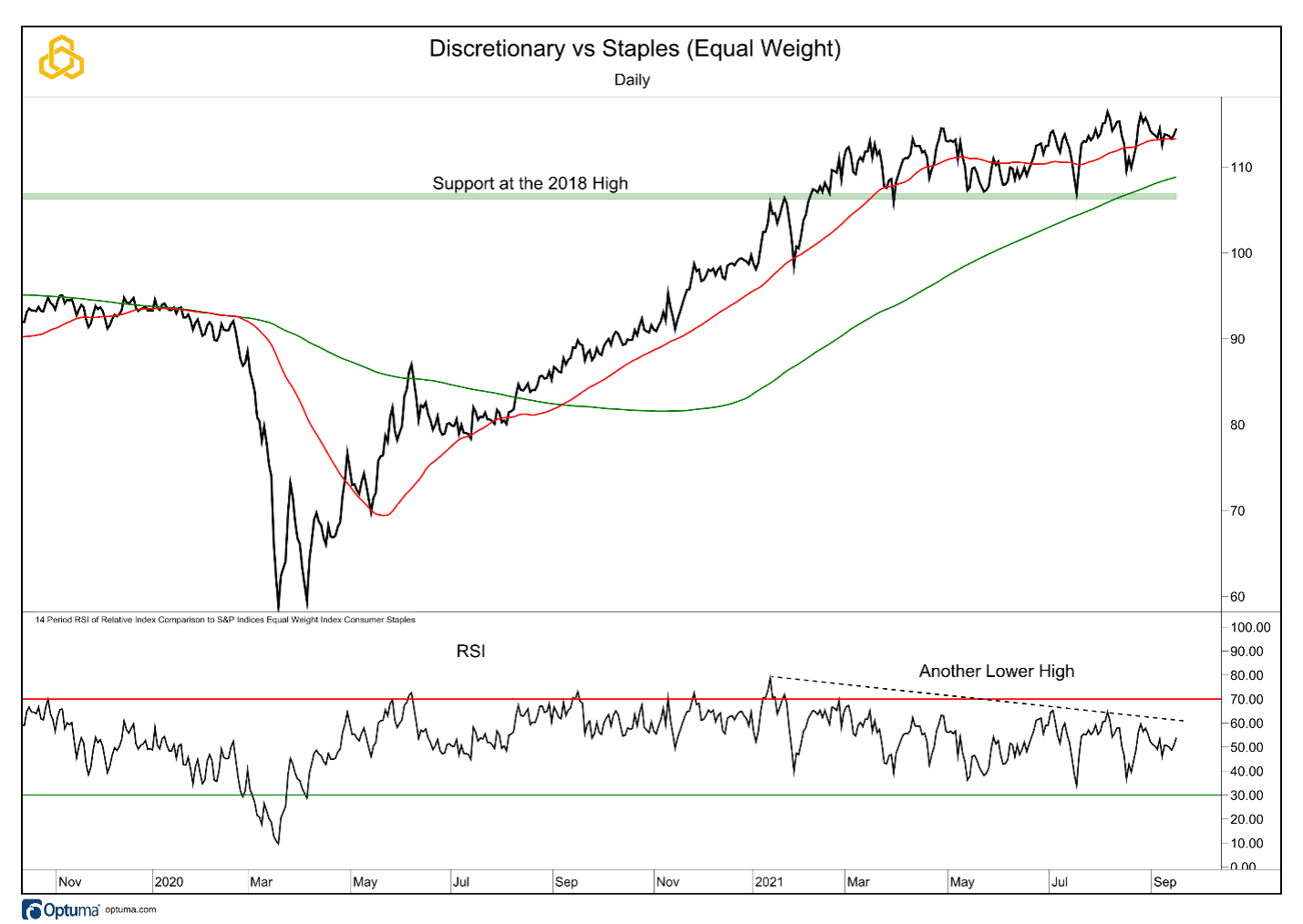
Copper vs Gold
The Copper/Gold ratio refuses to make up its mind as it remains in the consolidation that has marked trading for most of the year. The ratio is stuck between price-based support and resistance but is above the 50 and 200-day moving averages. The 14-day RSI is in the middle of the range but has been making lower highs since March. However, this indicator also has not become oversold during the consolidation in price. Momentum remains neutral, in line with the price trend.
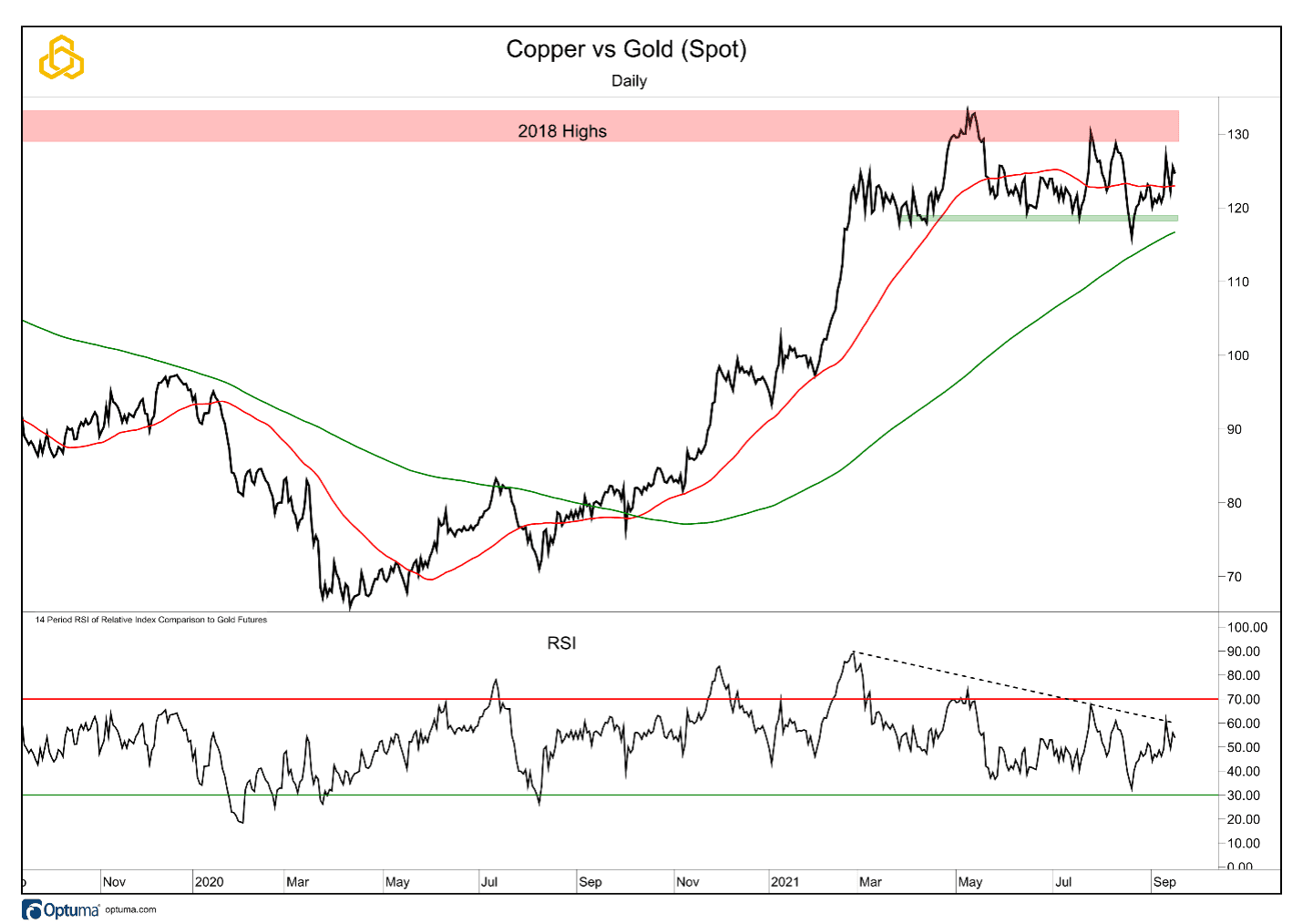
Lumber vs Gold
The Lumber/Gold ratio has made a strong move to the upside after holding price-based support and on the heels of the bullish divergence that we have been marking. The ratio is above the 50-day moving average for the first time since May. A break of the July highs would turn the intermediate-term trend to the upside and would be a bullish datapoint for risk assets in the market.
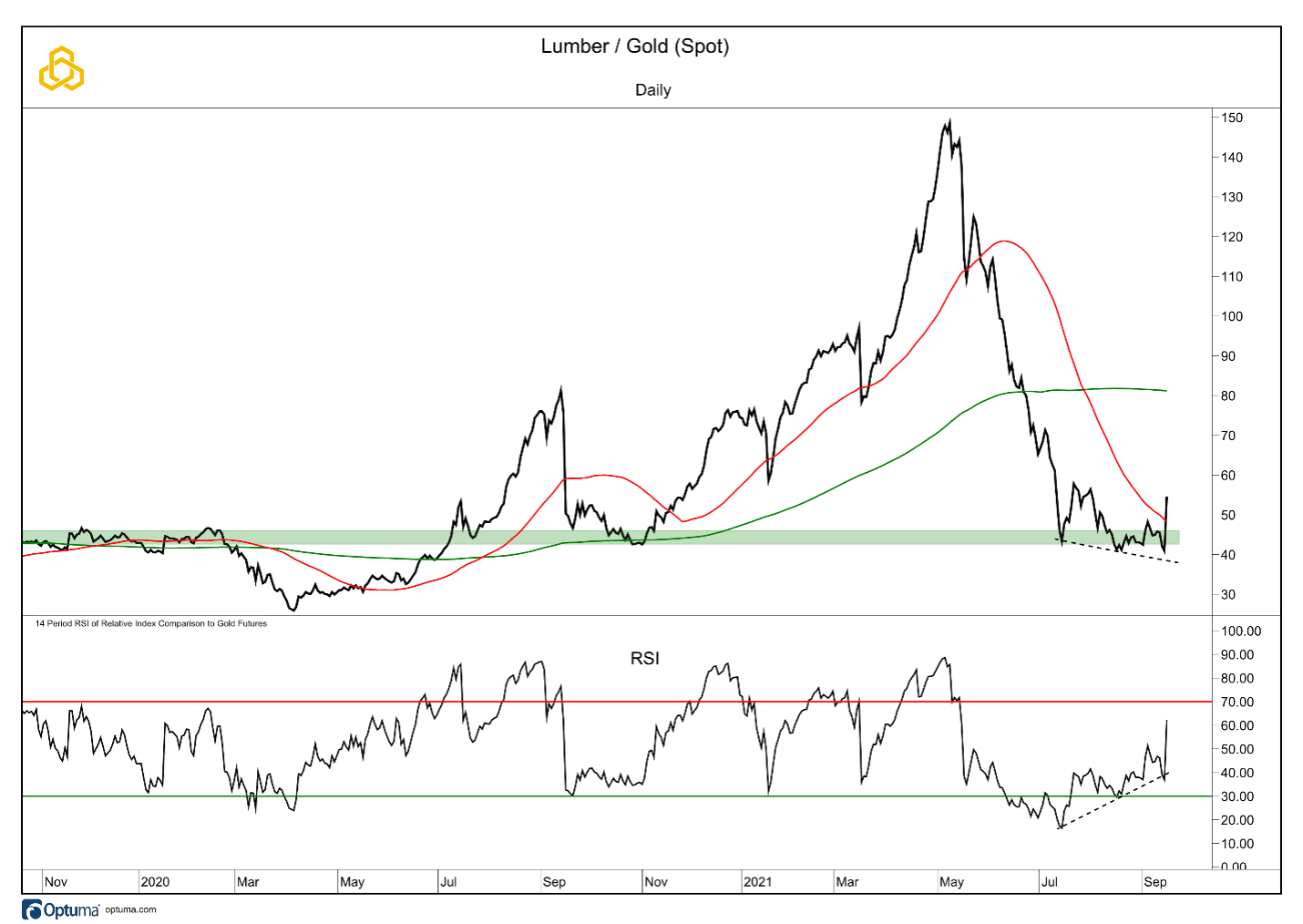
Small vs Large
With signs of life in the High Beta/Low Volatility ratio and the strong move in the Lumber/Gold ratio, both signs of increased risk appetite, we must wonder if the Small Caps will begin to lead Large Caps. Thus far, the trend remains to the downside, with the ratio below the 50 and 200-day moving averages. The 14-day RSI has been making higher lows of late but remains in a bearish regime for now.
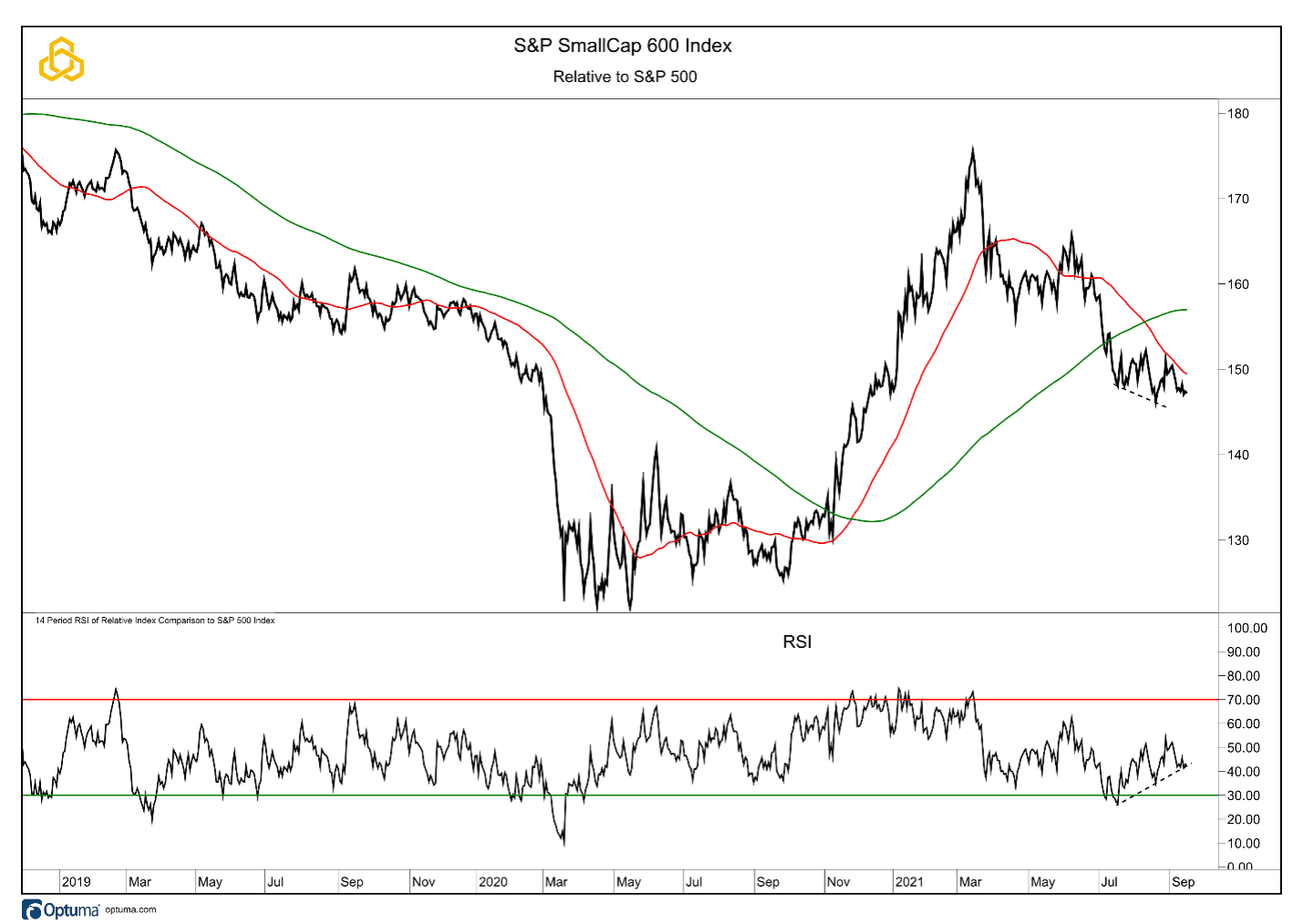
Growth vs Large
The Growth/Value ratio for the S&P 500 is holding above the resistance level (now support?) that we highlighted last week, as it trades above the rising 50 and 200-day moving averages. The 14-day RSI is in a bullish regime and is holding above the downtrend line, keeping momentum to the upside and in-line with the price trend.
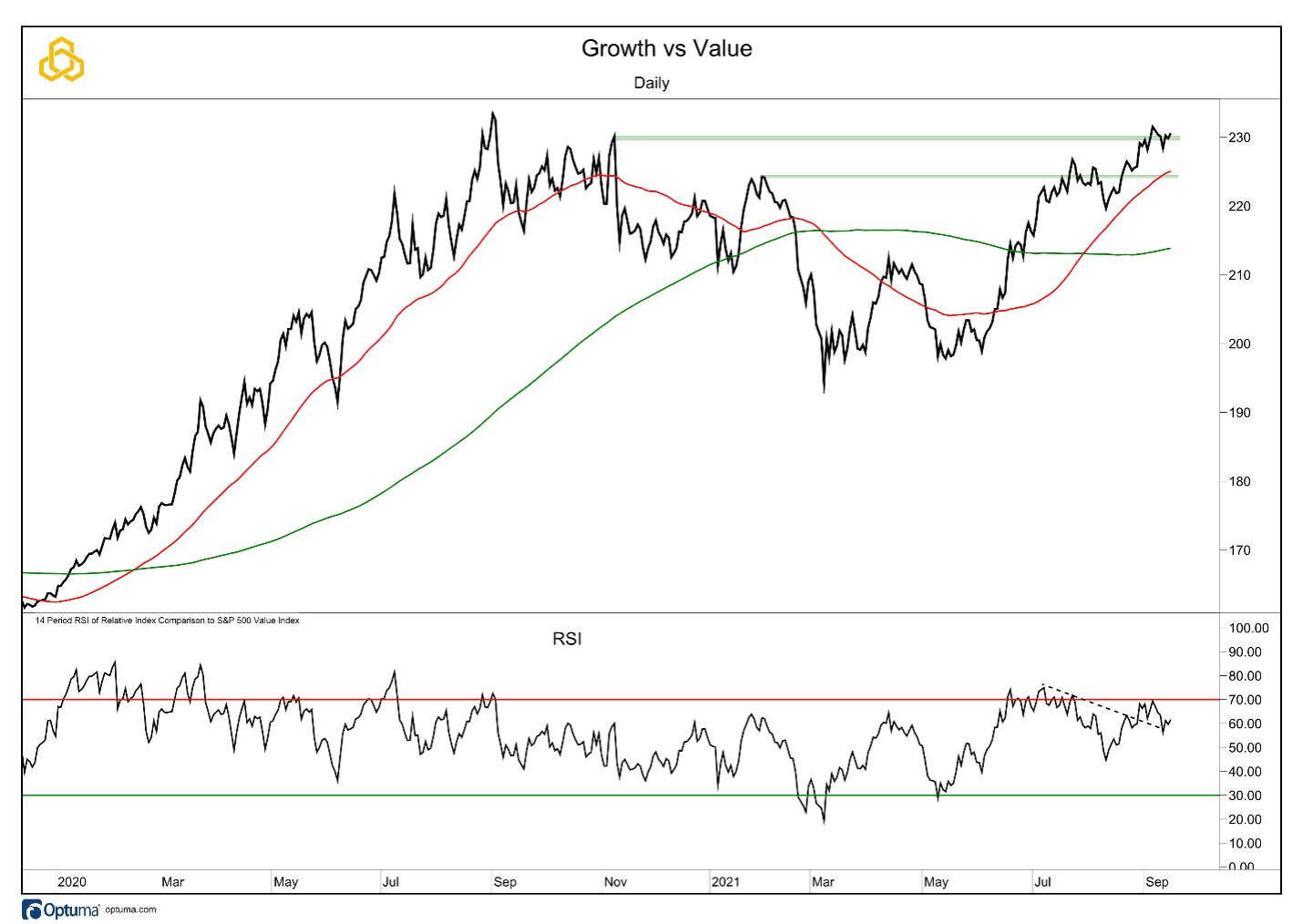
Take-Aways
There are signs of life in risk appetite on the part of investors as High Beta begins to lead Low Volatility and Lumber makes a strong move higher relative to Gold. At the same time, Large over Small and Growth over Value are ongoing trends. This all leads us to the same view that we have expressed for the past few weeks, the best strategy remains one of broad exposure to the equity market’s prevailing uptrend.
Disclosure: This information is prepared for general information only and should not be considered as individual investment advice nor as a solicitation to buy or offer to sell any securities. This material does not constitute any representation as to the suitability or appropriateness of any investment advisory program or security. Please visit our FULL DISCLOSURE page.
